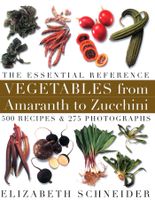Advertisement
Sorrels

Published 2001
Including
garden sorrel ,sheep sorrel ,dock , andwood sorrel
Sorrel is “by nature . . . Acid, sharpening appetite . . . and imparting so grateful a quickness to the rest as supplies the want of Orange, Limon . . . and therefore never to be excluded”, wrote John Evelyn in Acetaria: A Discourse of Sallets (1699). But it is usually excluded today. The word “sorrel” derives from “sour”, which describes a characteristic that all sorrels share and that has limited appeal in the United States.
Americans have historically been fickle about the tart leaves to which much of Europe has remained devoted for as long as salad and soup have existed. Sorrel was planted in American gardens at the beginning of the 19th century and probably earlier. In The Field and Garden Vegetables of America (1863), Fearing Burr listed five types of garden sorrel alone and wrote, “It has been asserted, that, amongst all the recent additions to our list of esculent plants, we have not one so wholesome, so easy of cultivation.”


